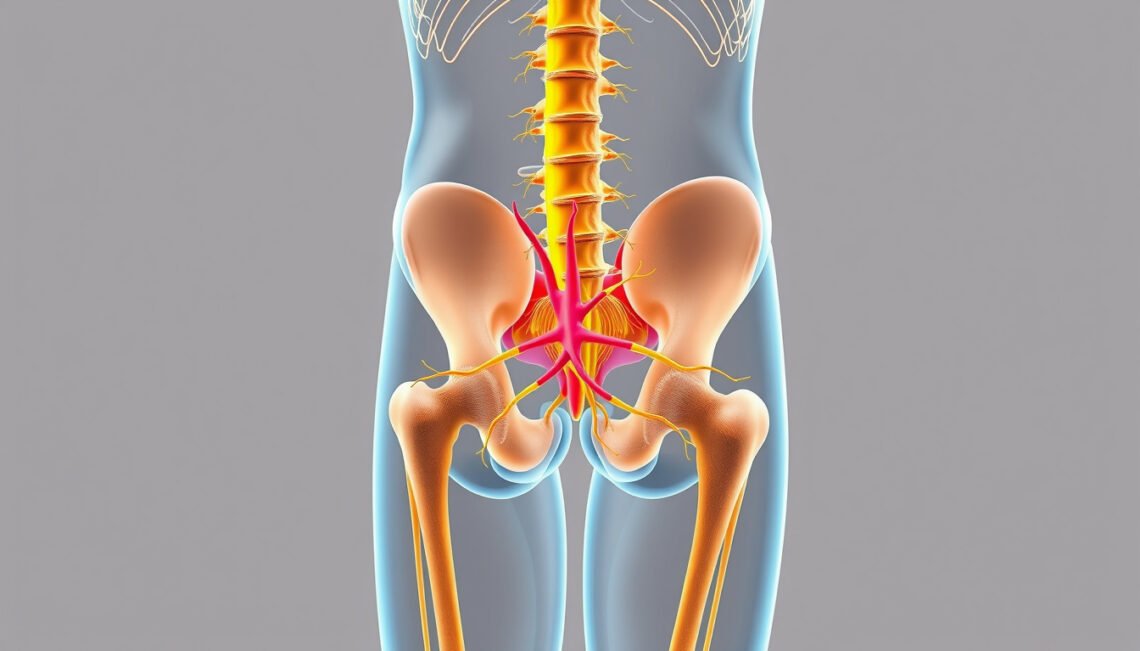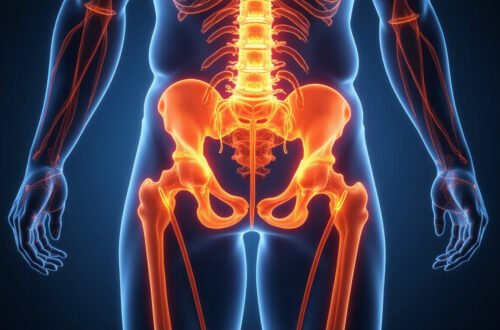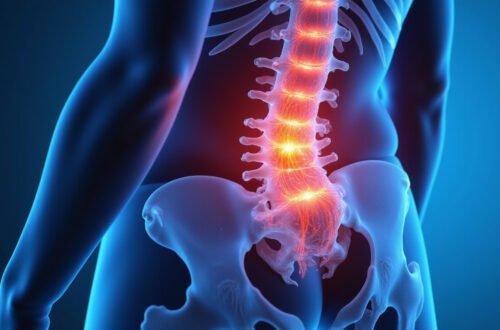Understanding sciatic nerve anatomy is crucial for anyone experiencing lower back or leg pain, as it forms the basis for effective treatment and pain relief strategies. The sciatic nerve is the largest and longest nerve in the human body, playing an essential role in lower limb function. This article delves into the intricate details of sciatic nerve anatomy, its significance, common issues related to it, and strategies for maintaining its health.
What is the Sciatic Nerve?
The sciatic nerve originates from the lower spine and extends down through the buttocks and back of each leg. It is composed of nerve fibers from the L4 to S3 spinal nerves, merging to form a single thick nerve that measures around one inch in diameter at its widest point. The nerve is responsible for transmitting signals between the spinal cord and the muscles and skin of the thigh, leg, and foot.
Detailed Overview of Sciatic Nerve Anatomy
Origin and Pathway
- Spinal Origin: The sciatic nerve arises from the lumbosacral plexus, specifically from the nerve roots L4, L5, S1, S2, and S3.
- Course: After forming in the pelvis, it exits through the greater sciatic foramen below the piriformis muscle, traveling down the posterior thigh.
- Branches: Near the knee, the sciatic nerve splits into two major branches:
- The tibial nerve (supplying the calf and foot muscles)
- The common peroneal (fibular) nerve (supplying muscles and skin of the lower leg and foot)
Functions of the Sciatic Nerve
- Motor Functions: It controls most muscles in the back of the thigh, as well as muscles in the lower leg and foot.
- Sensory Functions: It provides sensation to a large portion of the skin of the leg and foot.
Understanding the anatomy helps explain why irritation or injury to the sciatic nerve can cause symptoms like pain, numbness, tingling, or weakness along its distribution path.

Common Conditions Involving the Sciatic Nerve
Sciatica
The term sciatica refers to pain caused by irritation or compression of the sciatic nerve. This condition is characterized by sharp, radiating pain that extends from the lower back or buttocks down the back of the leg. Common causes include:
- Herniated disc pressing on nerve roots
- Spinal stenosis (narrowing of the spinal canal)
- Piriformis syndrome (compression by the piriformis muscle)
- Trauma or injury to the nerve
Other Nerve-Related Disorders
- Piriformis Syndrome: This occurs when the piriformis muscle spasms or tightens, compressing the sciatic nerve.
- Nerve Entrapment: Scar tissue or anatomical anomalies can trap the nerve, causing chronic pain.
Symptoms of Sciatic Nerve Issues
- Burning or shooting pain radiating from the lower back down the leg
- Numbness or tingling along the nerve’s pathway
- Muscle weakness in the affected leg or foot
- Difficulty standing or moving the foot (foot drop)
Diagnosing Sciatic Nerve Problems
A healthcare provider will assess symptoms and perform physical examinations, including checking reflexes, muscle strength, and sensation. Imaging studies such as MRI or CT scans may be used to identify the source of nerve compression.
Strategies for Sciatic Nerve Pain Relief and Health
1. Physical Therapy and Exercises
Targeted exercises to stretch and strengthen the lower back and leg muscles can help relieve pressure on the sciatic nerve. Examples include:
- Hamstring stretches
- Piriformis stretches
- Strengthening core muscles
2. Posture and Ergonomics
Maintaining proper posture, especially when sitting for extended periods, reduces stress on the lower back and sciatic nerve.
3. Pain Management
- Over-the-counter pain relievers such as NSAIDs (ibuprofen or naproxen)
- Heat or ice therapy to reduce inflammation
- Prescription medications or nerve blocks for severe cases
4. Surgical Options
In cases where conservative treatments fail and nerve compression is severe, surgical interventions such as discectomy or laminectomy might be recommended.
Preventative Tips for Sciatic Nerve Health
To maintain a healthy sciatic nerve and reduce the risk of sciatica, consider the following tips:
- Maintain a healthy weight to reduce spinal stress.
- Engage in regular low-impact exercise like walking or swimming.
- Practice good lifting techniques.
- Avoid prolonged sitting or standing in one position.
- Use ergonomic chairs and supportive mattresses.
Key Takeaways on Sciatic Nerve Anatomy
- The sciatic nerve is the longest and widest nerve in the body, extending from the lower spine through the legs.
- It controls both motor and sensory functions in the lower limb.
- Pain or dysfunction of the sciatic nerve typically presents as sciatica, with symptoms radiating from the lower back to the legs.
- Early diagnosis and appropriate treatment of sciatic nerve issues improve outcomes.
- Lifestyle modifications and exercises can significantly contribute to pain relief and sciatic nerve health.
FAQ About Sciatic Nerve Anatomy and Related Conditions
Q1: What causes sciatic nerve pain?
Sciatic nerve pain typically results from nerve compression or irritation associated with herniated discs, spinal stenosis, or muscular issues such as piriformis syndrome.
Q2: How can I identify if my pain is from the sciatic nerve?
Sciatic nerve pain usually radiates from the lower back or buttocks down the back of the leg and foot, often accompanied by numbness or weakness in these areas.
Q3: Can exercises improve sciatic nerve function?
Yes, targeted stretches and strengthening exercises can relieve pressure on the sciatic nerve and improve symptoms, especially when combined with proper posture and lifestyle adjustments.
For further understanding of nerve anatomy and its clinical relevance, referring to authoritative sources such as the American Academy of Orthopaedic Surgeons provides detailed insights (source).
Final Thoughts: Take Control of Your Sciatic Nerve Health
Exploring sciatic nerve anatomy offers vital insights into the root causes of sciatic pain and how to manage it effectively. If you’re experiencing discomfort along the sciatic nerve pathway, do not ignore it—early intervention can prevent chronic issues. Begin with gentle exercises, adopt ergonomic habits, and consult healthcare professionals to tailor a treatment plan. Prioritize your nerve health today and embrace a pain-free, active lifestyle.






